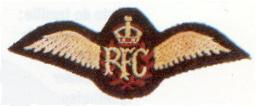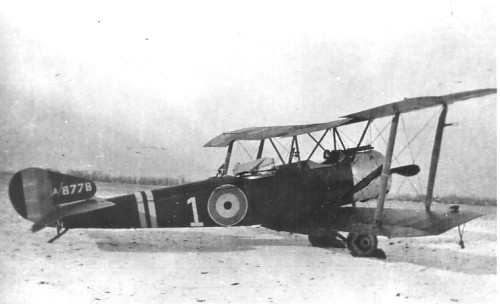 |
 |
Lieutenant
George Robert Craig M.C.
44 Squadron
|
|
In 1998 I commenced research into
my Uncle's death, which occurred in August 1917. He was killed while
flying in the Royal Flying Corps. He was a decorated soldier but met his demise practising aerobatic fighting maneuvers in a Sopwith Camel, while serving with No. 44 Squadron, a home defense squadron based at Hainault farm aerodrome in Essex. He was the first airman killed in a flying accident serving with No. 44 Sqn. at Hainault Farm. I have put together this web site with the help of my son and I hope you find the information about my Uncle, his colleagues and Hainault farm interesting. If you are able to add any information, have any questions or comments please contact me: . Peter Craig |
|
George Craig was born in 1897 at Wolsingham, County Durham.
He was the eldest son of a doctor.
He
had two brothers, one a physician, and the other an engineer. George
enlisted in the army at Manchester in the Royal Fusiliers Public
Schools Battalions in 1914. He was formally
inducted at Epsom and was posted to the 20th Service Battalion. |
The
award was announced in the London Gazette, July 1916 as follows:
 |
"His
Majesty the King has been graciously pleased to confer the Military Cross on
temp. 2nd Lieutenant George Robert Craig in recognition of his gallantry
and devotion to duty in the field. With a small patrol of one N.C.O. and four
men he dispersed a strong enemy patrol, killing the leader. On another occasion,
during a raid on the enemy trenches, he found the enemy's wire uncut, and, after
sending his party back, remained with two men and cut a sufficient
passage." View his Medal Entitlement Card Interestingly,
on the same page was the announcement of the award of the M.C. to 2nd Lt.
Albert Ball for conspicuous skill and gallantry. |
|
In 1916 Uncle George was seconded to the Royal Flying Corps with the temporary rank of 2nd Lieutenant. His first posting was to No. 2 School of Aeronautics at Oxford. He then trained in No. 5 Reserve Sqn. at Thetford, No. 27 Reserve Sqn. at the Flying Training School at Gosport in Hampshire, and No. 16 Reserve Sqn. at Beaulieu, also in Hampshire.
Bramham Moor |
|
|
|
The F.E.2b was a pusher configuration fighter and later a bomber [RAF photo] |
|
Sutton Farm |
|
|
| The B.E.12A was essentially a single seat fighter variant of the original B.E.2 design - (IWM Photo) [IWM Photo] |
 |
|
Sopwith 1½ Strutter |
|
Hainault Farm Some of the camels were converted for night fighter use. They were often referred to as Sopwith "Comics". The guns were mounted above the upper wing centre section each attached to a separate Foster rail-mounting. This permitted the pilot to fire upwards at an angle of 45° or directly forward above the upper wing. The cockpit was relocated back in line with the lower wings trailing edge and the main petrol tank was repositioned in front of the cockpit under the centre wing section. Some had a headrest added to the rear of the cockpit coaming. By moving the cockpit back the pilot was given ease of manipulation of the twin Lewis gun mountings. It is noted that not many Camels were in fact so modified. |
|
|
|
The Sopwith Camel |